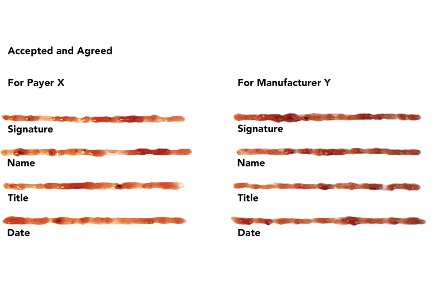Value-based contracts between payers and manufacturers are in vogue. From the payer’s perspective, paying for performance by getting reimbursed for product failure — however failure is defined, such as nonresponse or inadequate response, or adverse event — seems fair. And while there’s more talk than action right now, payers are cautiously entering into some agreements. Early adopters are evaluating whether they are paying for performance, and at what cost.
Pragmatism rules
Before seriously entertaining a value-based contract offer, a payer must first decide if the pain is great enough to seek relief. The spend and trend must be significant, and that explains why most value-based contracts are for relatively expensive products. A business case must be made for the product, the outcome and its time horizon, the number and mix of lives, and the performance metric. For example, high member-churn rates make long-term outcomes less attractive. Perhaps most important, there must be a belief that the product has the potential to yield the measurable outcome of interest and that the measure is both valid and reliable. These tests help quickly narrow the candidate therapeutic areas and products. Only when there is a potential fit will costs and benefits be considered.
As for costs, payers evaluate the legal, fiscal, and compliance-related transaction costs of the agreement. This exercise prompts a series of questions: Are required data already collected and accessible? If data are collected but not already stored in an accessible digital format, will providers who are already overtaxed with administrative tasks be asked to do it, or would the payer extract data retrospectively at an additional overhead cost? Does performance measurement require data that are not currently captured? If so, are the incentives large enough or frequent enough to motivate providers to take on yet another measure? What’s in it for the provider to do this? Is the relationship between the payer and providers close enough to affect change? Payers with salaried providers (e.g., an IDN like Kaiser Permanente) can shift provider behavior much more readily than payers with overlapping provider networks paid on a fee-for-service basis. And, of course, there are opportunity costs to consider as well, as a value-based contract may crowd out another contract for an alternative product.
As for benefits, payers’ potential savings estimates are fraught with assumptions about product performance and provider and patient behaviors. These often-imperfect models are inextricably linked to the outcome and probability of qualifying for a rebate. It is important to note that the potential savings will likely be constrained by manufacturers due to Medicaid, HRSA, and Medicare pricing calculations — so, the sky is not the limit. Beyond fortune, there is another potential benefit — fame. The reputational advantages conferred to organizations for doing something innovative and the individuals leading change can be powerful drivers. Something newsworthy is, in essence, free advertising. And change that aligns with a payer’s mission to help patients achieve better outcomes can yield an intrinsic reward as well. Even when all of these considerations suggest a good fit, however, a payer may conclude that the savings are unaffordable.
The potential dark side
Payers are certainly cautious of value-based contracts, and some may even be cynical. Some payers may view a value-based contract as just another rebate dressed in a socially desirable package. The payer may also reasonably surmise that manufacturers are not willing to make less money and wonder how the manufacturer will finance value-based contract savings. Through higher prices? Larger or more frequent price increases? The economic irony, perhaps missed by some payers, is that the “savings” incidence (or burden) may fall upon the payer and not the manufacturer! That is, the illusory “savings” or benefit may actually be a cost. Payer cynicism with value-based contract rebates may be rooted in a rich merchandising history where sellers count on some buyers to not qualify for the rebate or in examples of retailers marking up an item just prior to offering a discount. At an even deeper economic level, some payers may recognize that any savings associated with value-based contracts are fleeting one-time savings, soon obliterated by healthcare inflation.
The potential bright side
For now, some payers proceed with cautious optimism. Value-based contracts have the potential to ease payers’ uncertainty about manufacturers’ claims of savings based on tenuous clinical trial results before the emergence of real-world evidence, which is what payers really, really want. In some instances, value-based contracts may actually yield savings and slow the rate of cost increases, or help build real-world evidence of value. The true value of value-based contracts has yet to be determined, and the vexing veil of secrecy surrounding most of these contracts means their terms and returns may never be known publicly. Possibly the greatest contribution of the value-based contract buzz is that it generates a healthy discourse about value itself and pushes the notion that payment should, at least in theory, be tied to performance.



No Comments